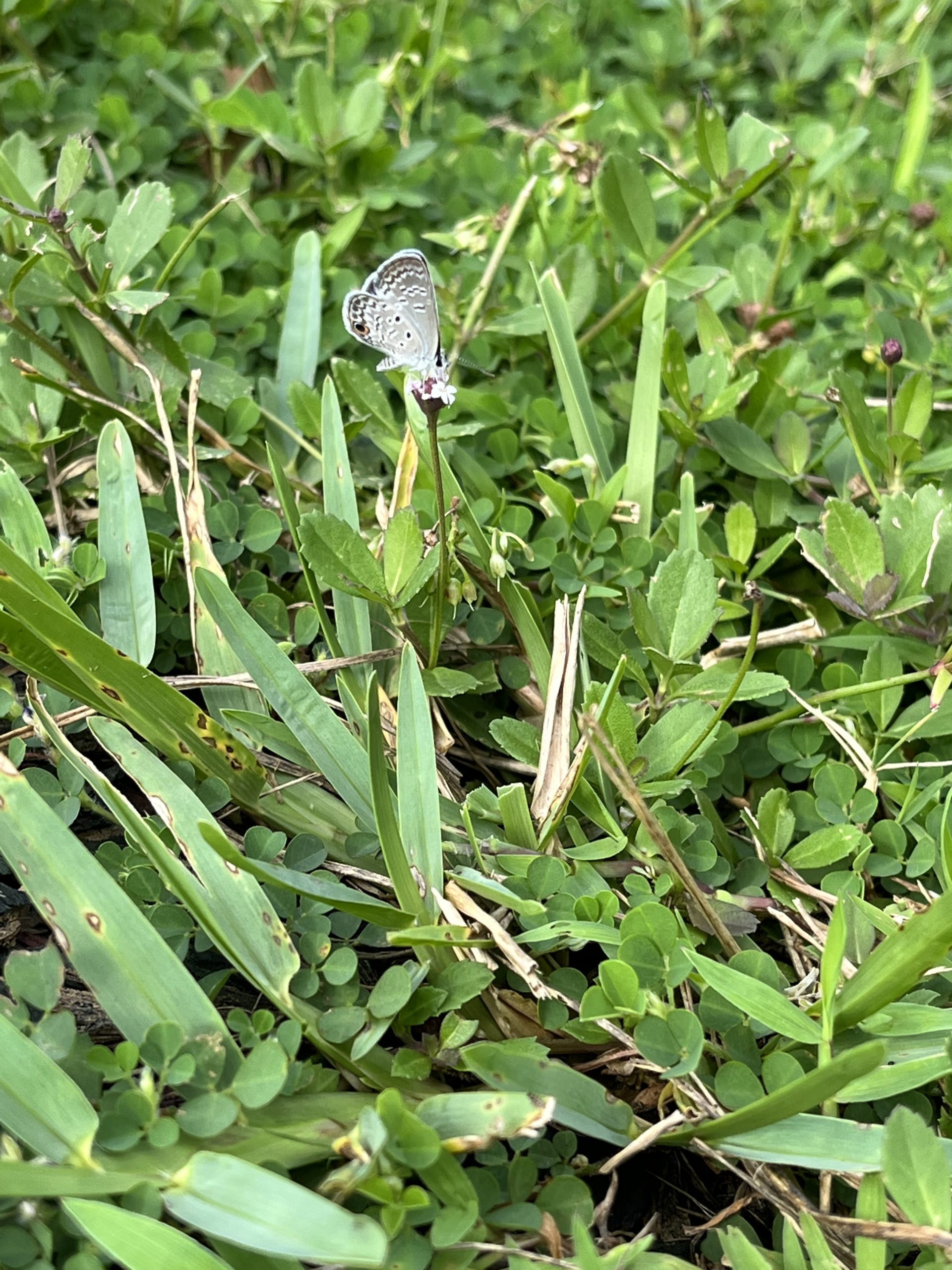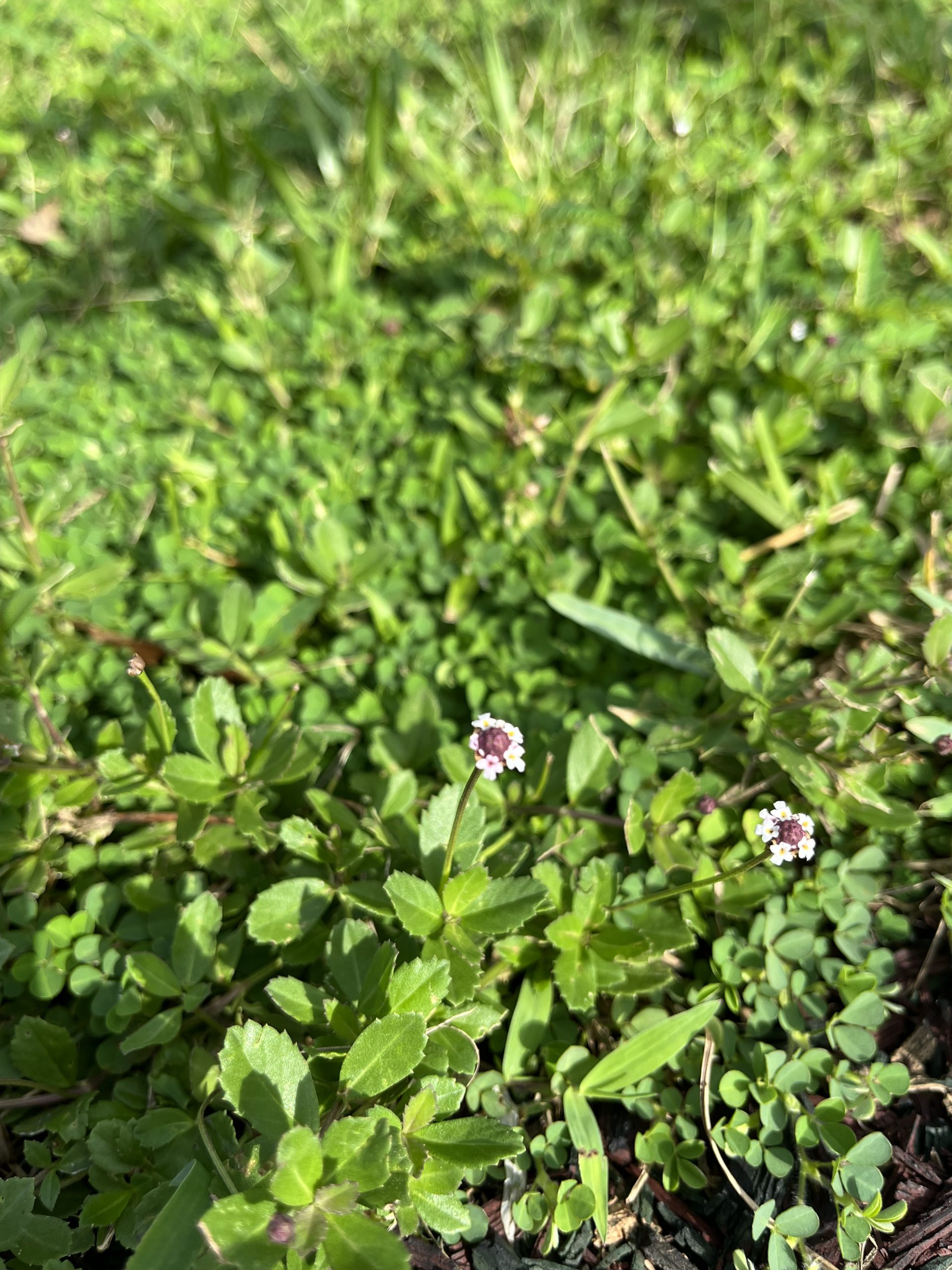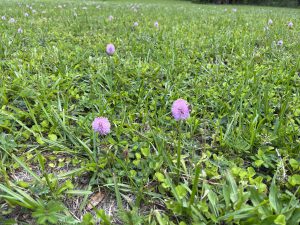Turfgrasses such as St. Augustine grass, zoysia, and bahia are by far the most commonly planted groundcovers in the state of Florida for residential lawns and common areas. But there are so many more exciting, flowering groundcovers that can be used in lieu of or in addition to these grasses. To many homeowners, these may be considered weeds. But to our struggling pollinators, these flowering groundcovers are a lifeline. And many of them are quite beautiful.


I came across a native flowering groundcover called frogfruit (Phyla nodiflora) yesterday and as I was standing there, I watched two ceraunus blue butterflies merrily feeding themselves from one little flower to the next. This particular stand of frogruit was growing in a common area of St. Augustine grass and both were living quite peacefully together. By planting native groundcovers, or allowing the ones that pop up to remain in your lawn, your yard can provide vitally important sources of food and habitat for many wildlife species, including pollinators. Frogfruit for instance provides nectar for little guys such as this ceraunus blue butterfly and our native bees, but is also a larval host plant for common buckeye, white peacock, and Phaon crescent butterflies (see ‘Frogrfruit‘).
Another great example of incorporating native flowering groundcovers with turfgrass is intermixing sunshine mimosa (Mimosa strigillosa) with bahia. Bahia grass is not a dense grower and naturally tends to have bare areas of soil. Sunshine mimosa in particular fills in these bare areas with lovely pink fluffy flowers that remind me of a Dr. Seuss book and are highly attractive to pollinators. Once more, the foliage of sunshine mimosa is very soft and fern like, spreading by runners, and when touched will curl up as a defense mechanism. It’s a fun little trick to show children, and adults too. We had about two acres of bahia and sunshine mimosa mixed together and not only was the effect very beautiful, our yard didn’t need any irrigation or fertilizer whatsoever. (see ‘Powderpuff mimosa‘).
The important thing to take away from this is, to find peace with the weeds. Allow our native groundcovers and wildflowers to intermix with your lawn, or perhaps replace the turfgrass entirely. Avoid and remove invasive plants that alter how ecosystems function and can be a detriment to our wildlife species. And do not spray your flowering groundcovers with pesticides. Habitat loss, overuse and misuse of pesticides are some of the biggest contributing factors to the decline of our honeybees, native bees, beneficial wasps, birds, and butterflies around the world.
To learn more about grass alternatives, including flowering groundcovers, visit https://gardeningsolutions.ifas.ufl.edu/lawns/turf-types/alternatives-to-turfgrass.html or contact your UF/IFAS Marion County Extension Service at 352-671-8400. To find your local county Extension Service visit https://sfyl.ifas.ufl.edu/ .


 2
2
